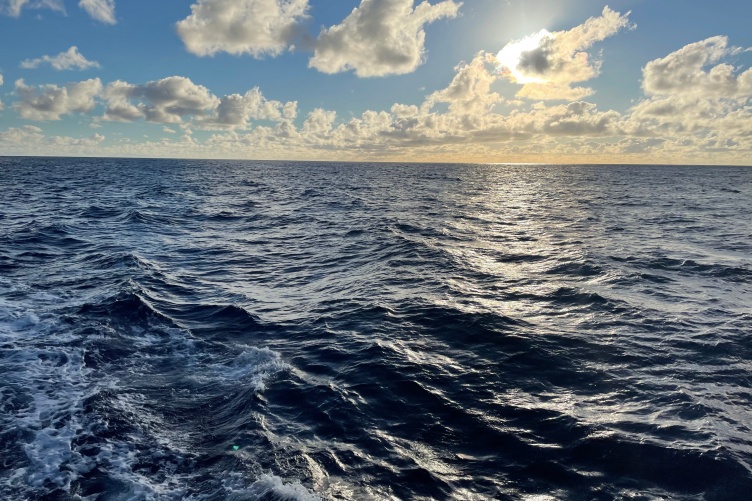
The world’s oceans cover over 70% of the Earth’s surface, and contain over 97% of the Earth’s water. The five oceans, in order of size, are the Pacific, Atlantic, Indian, Southern, and Arctic Oceans. The ocean is not only important for supporting marine life, but also plays a crucial role in regulating the Earth’s climate, absorbing carbon dioxide and heat. It also provides many resources such as oil and gas, minerals, and renewable energy. However, the ocean is facing many threats such as pollution, overfishing, and climate change, which require urgent attention and action.
The deepest part of the ocean is the Challenger Deep in the Mariana Trench, which is over 36,000 feet (11,000 meters) deep. This depth is over 6.8 miles (11 kilometers), which is deeper than the height of Mount Everest, the highest peak on land. The pressure at the bottom of the Mariana Trench is over 1,000 times that at sea level, making it a difficult place for humans to explore. However, unmanned vehicles and submarines have been able to capture footage and samples of the unique and fascinating creatures that inhabit these deep waters.
The ocean contains an estimated 20 million tons of gold, but it is not economically feasible to extract it. The gold in the ocean is found in seawater, but in very small concentrations – approximately 13 billionths of a gram per liter. The cost of extracting gold from the ocean is much higher than that of extracting it from land, making it economically unviable. However, researchers are exploring ways to use genetically engineered bacteria to extract gold from seawater more efficiently.
The Atlantic Ocean is the second-largest ocean, covering approximately 20% of the Earth’s surface. It is the youngest of the five oceans, having formed around 135 million years ago. The Atlantic Ocean has played a significant role in world history, with the Vikings using it to explore and settle North America, and European explorers such as Christopher Columbus and Ferdinand Magellan using it to reach the New World and circumnavigate the globe.
The Pacific Ocean is the largest ocean, covering approximately one-third of the Earth’s surface. It is also the deepest ocean, with an average depth of 12,080 feet (3,682 meters). The Pacific Ocean is home to many unique and diverse marine species, such as the humpback whale, giant Pacific octopus, and great white shark. The ocean is also prone to earthquakes and tsunamis due to its location on the “Ring of Fire”, a region of high volcanic and seismic activity.
The ocean is home to an estimated 1 million different species of plants and animals. These species range from microscopic plankton to the largest animal on Earth, the blue whale. The ocean’s biodiversity is important not only for supporting marine life, but also for providing humans with resources such as seafood, medicines, and materials for construction.
The Great Barrier Reef in Australia is the largest coral reef system in the world. It is home to thousands of different species of marine life, and is a popular destination for diving and snorkeling. However, the Great Barrier Reef is also facing threats such as coral bleaching due to climate change, as well as pollution and overfishing.
The ocean plays a vital role in regulating the Earth’s climate, by absorbing and storing large amounts of heat and carbon dioxide. This helps to mitigate the effects of climate change by reducing the amount of carbon dioxide in the atmosphere. However, the ocean’s ability to absorb carbon dioxide is not unlimited, and continued emissions of greenhouse gases are causing the ocean to become more acidic, which can harm marine life and disrupt the ocean’s ecosystem. It is important to reduce carbon emissions to protect the ocean and its ability to regulate the Earth’s climate.
The ocean is also a major source of renewable energy, with technologies such as wave and tidal power harnessing the power of the ocean to generate electricity. In fact, the potential energy that could be generated from the world’s oceans is estimated to be around 10,000 times greater than the world’s current energy consumption. However, there are still many technical and economic challenges to overcome in order to fully exploit this potential.
The Dead Sea, located between Jordan and Israel, is not actually a sea, but a salt lake. It is the lowest point on Earth, with a surface elevation of around 1,400 feet (430 meters) below sea level. The high salt concentration in the Dead Sea makes it difficult for most life forms to survive, but it also makes the water buoyant, allowing swimmers to float effortlessly.
The Gulf Stream is a powerful ocean current that plays a significant role in regulating the Earth’s climate. It carries warm water from the Gulf of Mexico across the Atlantic Ocean towards Europe, warming the climate of western Europe and affecting weather patterns across the globe. Changes to the Gulf Stream could have significant impacts on the climate and weather patterns of many regions.
The ocean’s tides are caused by the gravitational pull of the moon and the sun. The gravitational force of the moon is stronger on the side of the Earth closest to the moon, causing a bulge of water to form. As the Earth rotates, this bulge of water causes the tides to rise and fall. Tidal energy is a form of renewable energy that harnesses the power of the tides to generate electricity.
The Titanic, a famous passenger ship that sank in 1912, rests at the bottom of the North Atlantic Ocean. The wreckage was discovered in 1985, and has since been the subject of much study and fascination. The Titanic is a symbol of the power and dangers of the ocean, and a reminder of the importance of safety and preparedness at sea.
The ocean’s “Blue Economy” refers to the economic activities and industries that depend on the ocean, such as fishing, shipping, tourism, and offshore energy production. The Blue Economy is estimated to be worth over $3 trillion globally, and provides employment and livelihoods for millions of people. However, the sustainability of the Blue Economy is dependent on responsible management and conservation of the ocean’s resources.
The concept of a “Plastic Island” or “Great Pacific Garbage Patch” refers to an area in the North Pacific Ocean where large amounts of plastic waste and debris have accumulated due to ocean currents. The size and extent of the plastic island are difficult to determine, as the waste is dispersed throughout the water column and can be ingested by marine life, causing harm and even death.
The ocean has been used for transportation for thousands of years, with early civilizations using boats and ships for trade and exploration. Today, shipping remains a crucial part of the global economy, with around 90% of all goods being transported by sea. However, shipping also has environmental impacts such as air and water pollution, which need to be addressed through sustainable practices and technologies.
The ocean has also played a significant role in military history, with navies using ships and submarines to defend and attack throughout history. Today, many countries have naval forces that work to protect their territorial waters and engage in international operations. The ocean’s vastness and unpredictability make it a challenging and important environment for military operations.
The ocean has been a subject of fascination and exploration for centuries, with many famous explorers setting out to chart new territories and discover new species. One of the most famous ocean explorers was Jacques Cousteau, a French naval officer and oceanographer who co-invented the Aqua-Lung, the first self-contained underwater breathing apparatus, and went on to produce many popular documentaries about ocean life.
The ocean is home to a diverse array of marine life, including whales, dolphins, sharks, sea turtles, and countless species of fish and invertebrates. However, many of these species are threatened by overfishing, pollution, and climate change. It is important to protect the ocean and its inhabitants through conservation efforts and sustainable fishing practices.
Coral reefs are one of the most diverse and productive ecosystems in the ocean, providing habitats for thousands of species of fish and invertebrates. However, coral reefs are also threatened by pollution, climate change, and ocean acidification. It is important to protect and conserve coral reefs through sustainable practices and awareness-raising campaigns.
The Mariana Trench, located in the western Pacific Ocean, is the deepest part of the ocean, with a depth of over 36,000 feet (11,000 meters). The extreme pressure and darkness at this depth make it a difficult environment for life, but scientists have discovered unique and fascinating species adapted to survive in these extreme conditions.
The ocean’s currents play a crucial role in regulating the Earth’s climate, distributing heat and nutrients around the globe. The ocean’s conveyor belt, also known as the Thermohaline Circulation, is a system of deep ocean currents that drives the movement of heat and nutrients around the planet. Changes to this circulation could have significant impacts on the Earth’s climate.
The first recorded attempt at measuring the depth of the ocean was made by the British explorer James Cook in 1775, during his second voyage to the South Pacific. Cook used a rope with a lead weight attached to measure the depth of the ocean, a technique that is still used today in some form. However, it was not until the 20th century that more accurate methods of measuring ocean depth, such as sonar and bathymetry, were developed.
The ocean has been used for transportation for thousands of years, with early civilizations such as the Phoenicians and Greeks using ships to trade goods across the Mediterranean Sea. The ocean continues to be a vital transportation route for international trade, with over 90% of global trade being carried by sea. The development of shipping technology, such as containerization and automated cargo handling, has made shipping faster, safer, and more efficient.
The International Date Line, which marks the boundary between one calendar day and the next, follows a zigzag pattern in the Pacific Ocean to avoid crossing through inhabited islands. The line was established in 1884 by an international agreement, and it runs roughly along the 180th meridian. The line moves to the east of the meridian through the islands of Kiribati, Tonga, and Samoa, to avoid creating a situation where neighboring islands are on different calendar days.
The ocean contains an estimated 20 million tons of uranium, which could potentially be extracted for use as fuel in nuclear reactors. However, the extraction of uranium from seawater is currently not commercially viable, as the concentration of uranium is very low (about 3 parts per billion). Researchers are currently working on developing more efficient methods of extracting uranium from seawater, which could help to provide a sustainable source of nuclear energy.
The ocean has played a significant role in human history, with the Spanish conquistadors using the Gulf Stream to transport their treasure fleets from the Americas back to Spain. The Gulf Stream is a warm ocean current that flows from the Gulf of Mexico along the east coast of North America, and then across the Atlantic towards Europe. The current was used by Spanish galleons to transport silver and gold from the New World back to Spain, which played a major role in financing the Spanish Empire.
The ocean is also a major source of renewable energy, with technologies such as tidal and wave power being developed to harness the power of the ocean’s currents and waves. Tidal power involves harnessing the energy of the tides, which are caused by the gravitational pull of the moon and the sun. Wave power involves using the energy of ocean waves to generate electricity. These technologies have the potential to provide a significant source of clean, renewable energy, but they are still in the early stages of development.
The ocean is constantly in motion, with the currents of the world’s oceans creating a global system of circulation known as the “Great Ocean Conveyor Belt”. This circulation is driven by differences in temperature and salinity, with warm water from the equator moving towards the poles and cold water from the poles moving towards the equator. The conveyor belt plays a major role in regulating the Earth’s climate, as it helps to distribute heat and nutrients around the world’s oceans. Changes to the conveyor belt, such as a slowing or stopping of the circulation, could have significant impacts on global climate patterns.
The ocean remains one of the greatest mysteries and frontiers of human exploration and discovery. As technology advances and our understanding of the ocean grows, we are constantly uncovering new and fascinating aspects of this vast and complex ecosystem. The ocean’s importance to the Earth’s climate, economy, and biodiversity cannot be overstated, and it is up to all of us to protect and conserve this precious resource for future generations.









